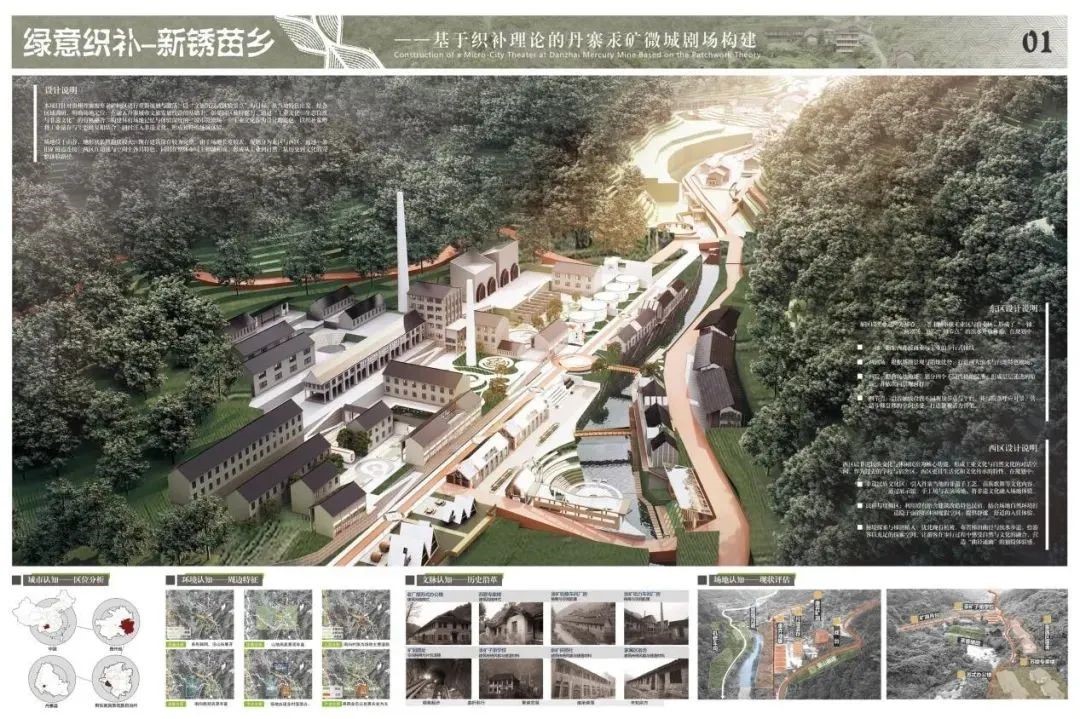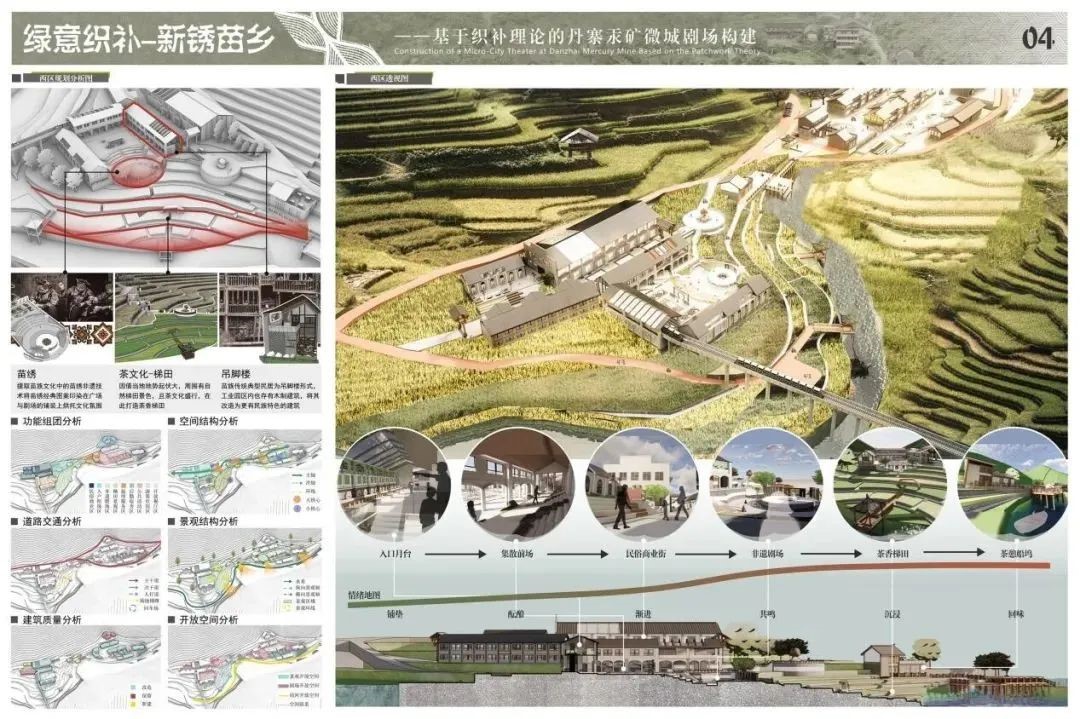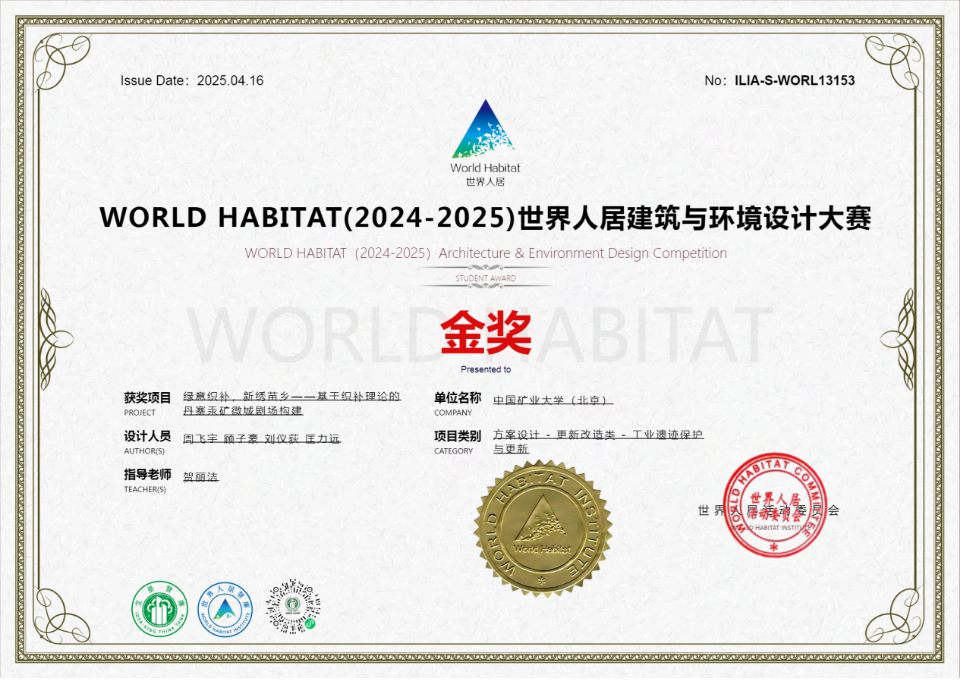


Recently, the results of the WORLD HABITAT (2024-2025) World Habitat Architecture and Environmental Design Competition were announced. Zhou Feiyu, Gu Zihao, Liu Yidi, and Kuang Liyuan, undergraduate students of the 2021 grade in the Architecture major at the School of Mechanics and Civil Engineering, China University of Mining and Technology-Beijing, under the guidance of Teacher He Lijie, won the Gold Award in the Renovation and Regeneration category (this competition awarded 2 Gold Awards, 4 Silver Awards, 6 Bronze Awards, and 3 Merit Awards in this category) with their work titled "Weaving Green into the New Rustic Township - Constructing the Danzhai Mercury Mine Micro-City Theatre Based on the Theory of Weaving and Patching." They stood out among 563 entries from around the globe.
The World Habitat Architecture and Environmental Design Competition is jointly organized by the WORLD HABITAT INSTITUTE and the World Academy of Human Settlements and Environment. It aims to commend innovative, excellent, and transformative residential design concepts, projects, and proposals worldwide and is a widely recognized design competition in the field of human settlements. With the theme of "Green Intelligent Manufacturing and Harmonious Coexistence," this edition of the competition focused on seven categories: Ecological Restoration, Planning, Architectural Design, Landscape Design, Spatial Design, Rural Design, and Renovation and Regeneration.
Participating universities in this competition include renowned institutions such as Tsinghua University, Peking University, Tongji University, Southeast University, Tianjin University, Harbin Institute of Technology, South China University of Technology, and Chongqing University. Led by Academician Wu Zhiqiang of Tongji University, a jury of 55 renowned experts, including Yang Rui of Tsinghua University, Liu Binyi of Tongji University, Cheng Yuning of Southeast University, Hu Yike of Tianjin University, Zhu Xun of Harbin Institute of Technology, Guan Shaoping of South China University of Technology, and Du Chunlan of Chongqing University, conducted rigorous evaluations to select innovative masterpieces.
The award-winning work fully demonstrates the teaching innovation achievements of teachers and students at China University of Mining and Technology (Beijing) in areas such as ecological renewal of mining wastelands, revitalization and utilization of industrial heritage, and green and low-carbon architectural design. It highlights the development characteristics of the "Mining Architecture" formed by the architecture discipline in the context of "Emerging Engineering Education."
Moving forward, we will continue to deepen the distinctive training system of "Mining Architecture," integrating professional characteristics such as ecological restoration of mining areas, protection of mining heritage, and green and low-carbon design into the entire process of talent cultivation. We will strive to cultivate innovative design talents who are both rooted in industry development and possess an international perspective, contributing the wisdom of China University of Mining and Technology-Beijing to the transformation of resource-based cities and the sustainable development of human settlements.